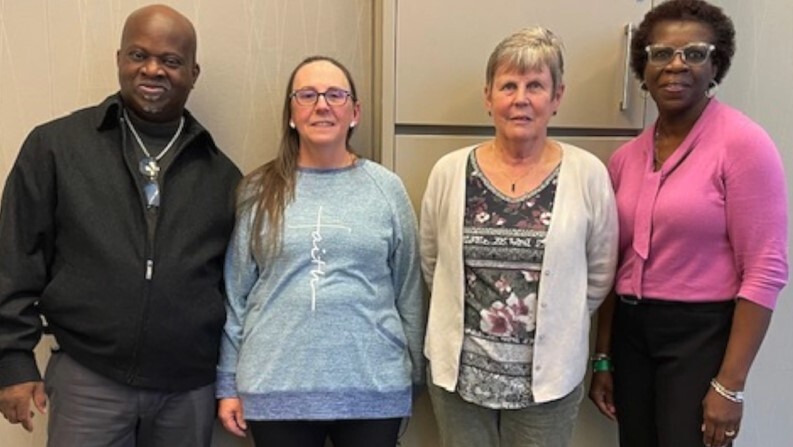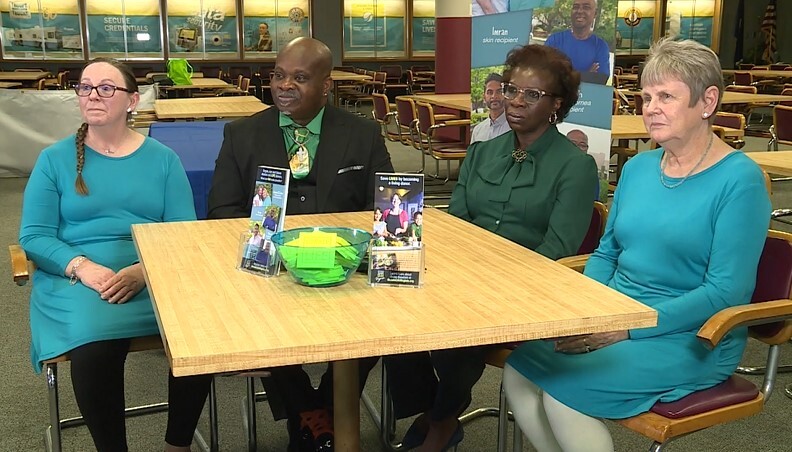RICHMOND, Va. -- It’s a family story of both addition and subtraction.
On National Living Donor Day, two sets of Virginia siblings said they now considered themselves one big family after a donor swap arrangement that likely saved two lives.
In 2015, Evon Walker found out she had minimal change disease, a condition that generally impacts children but causes kidney failure. By 2019, her doctors said she needed a transplant in order to avoid at-home dialysis.
“I would get winded. I had no strength. It was just taking everything out of me,” Walker said.
Sam Maye was diagnosed with diabetes in the early 2000s, but in 2019, his doctors delivered the news that he was in renal failure, which required several years of at-home dialysis treatment, for several hours each day, seven days each week.
“When you’re on dialysis, you’re waiting for a donor from someone who has passed. It can take anywhere from five - 10 years before you find a match,” said Maye.
Both Carol Chapman, Evon’s sister, and Sophia Maye-Smith, Sam’s sister, wanted to help their siblings and got tested to see if they could become living donors. They weren’t matches for their respective siblings but later found out they were matches.

“[Doctors] told me what my options were, and they mentioned the swap program. I said, ‘what are you talking about?’ I had no idea. I thought if I didn’t have a perfect match then I couldn’t get a live donor,” Walker said.
The technical name for this is a “paired exchange program” or donor swap.
Here’s how it works, according to the National Kidney Foundation:
“Some transplant centers will help incompatible pairs of recipient/donors through a process called paired exchange, which involves two living donors and two recipients. If the recipient from one pair is compatible with the donor from the other pair, and vice versa– the transplant center may arrange for a "swap"–for two simultaneous transplants to take place. This allows two transplant candidates to receive organs and two donors to give organs though the original recipient/donor pairs were unable to do so with each other.”
So in this case, Carol was a match for Sam, and Sophia was a match for Evon. A fact none of them would have known separately had the sisters not volunteered to see if they could become living donors.
“It just speaks to the fact that we have so much more common as people,” said Maye-Smith.
“I’m getting a little emotional. I can’t say enough how appreciative that this program was here,” said Walker.

The subtraction part of this story led to the addition portion.
In July 2021, both sets of recipient/donor went through the transplant procedure.
All four are now healthy, with a few minor lifestyle adjustments, and now consider themselves extended family.
They all met in person for the first time in November 2021, just before Thanksgiving.
“Yes, a deceased donor would have worked, but the life expectancy of that is around seven years so I was told. This can be a lifetime,” said Walker.
“Taking care of myself wasn’t just about me. It was so I could be a benefit to someone else,” said Maye-Smith.
“Would I do it again? I would do it again. But, I only have one more kidney,” said Chapman with a chuckle from the group.
“I’m going to do whatever necessary to make sure I get the 20-plus years from this God willing. That’s how you have to look at life. This is my sister,” said Maye with glance to Chapman.
“We’re all the same on the inside. I just love these two, and it’s the perfect family,” Chapman said with nods from the group.

Walker is a longtime customer service employee at the DMV in South Hill, Virginia. She has been thanking people for choosing to become an organ donor when getting their driver's license, but personalizes that appreciation now.
“I tell them I’m a recipient, so I really appreciate that you want to be an organ donor. It’s not just for my benefit, but it’s for everyone out there who thought that they were at the end of the world,” Walker said.
The group said they were mostly unaware of donor swap programs until going through this process. They encourage others to see if one is available in their area.
More than 6,500 living donors saved another person in the U.S. last year alone, according to Donate for Life. While most patients wait for the traditional transplant from a deceased donor, living donors can more quickly help the 2,600 Virginians waiting for a life-saving organ transplant.
Certain transplant centers do have donor swap programs.
You can learn about becoming an organ donor through Donate for Life Virginia.



